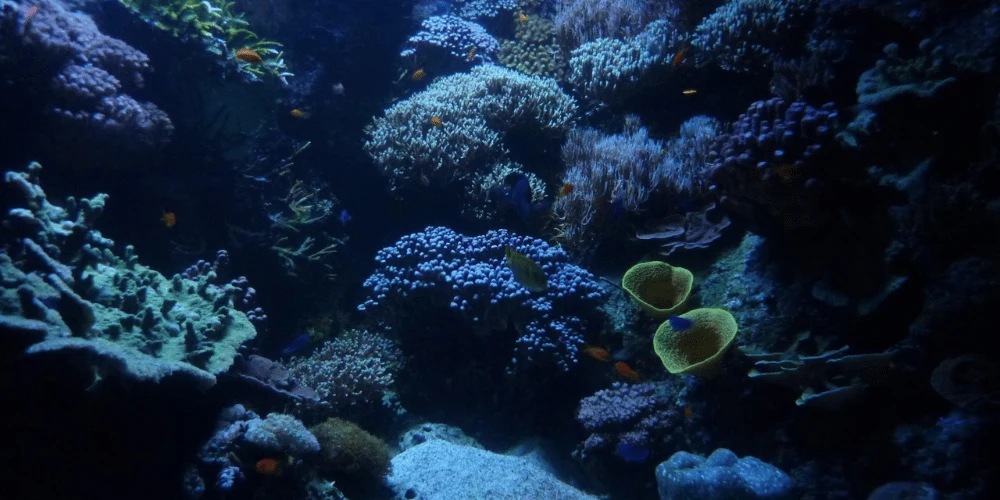Ancient Maritime Mystery Solved? New Study Reveals Patterns Behind Ocean’s Bioluminescent Display

Anúncios
The Enigmatic Milky Seas Phenomenon
Historical Accounts of Mysterious Ocean Glows
Mysterious ocean glows, termed “milky seas,” have been documented for over 400 years.
These phenomena, often described by sailors, exhibit a captivating and steady glow emanating from vast areas of the ocean. J. Brunskill, an officer on the SS Ixion in 1967, recounted how the “sea from horizon to horizon in all directions took on a phosphorescent glow.” Nearly a decade later, Captain P.W.
Anúncios
Price of the MV Westmorland described sailing through a “large area of bioluminescence” in the Arabian Sea, noting the sea “glared a brilliant and bright green”.
Description of the Phenomenon
Milky seas are unlike any other bioluminescent displays.
Anúncios
These events cover extensive areas, presenting a continuous, bright phosphorescent glow.
Unlike the blue flashes caused by dinoflagellates when disturbed, milky seas emit a steady, ghostly light that can illuminate the surroundings to such an extent that one could read by it.
Sailors liken the color to glow-in-the-dark stars, highlighting its enchanting and otherworldly appearance.
Scale and Duration of These Events
One of the most remarkable aspects of milky seas is their scale.
These phenomena can cover vast expanses up to 100,000 square kilometers (approximately 39,000 square miles) and can last for an extended period, sometimes months.
This extraordinary scale and duration make milky seas visible even from space, adding to their mystique and wonder.
Remarkably elusive, milky seas occur in remote ocean regions, far from the casual observer.
This contributes to the rarity of direct observation and study, leaving many aspects of the phenomenon shrouded in mystery.
As researchers delve deeper into the history and characteristics of milky seas, examining not just the glowing waters but the conditions that foster them, the journey to understand these luminous displays is as captivating as the events themselves.
Breakthrough Research and Database Creation
Justin Hudson’s recent work marks a pivotal advancement in understanding the mysterious “milky seas” phenomenon.
This doctoral student at Colorado State University’s department of atmospheric science has compiled an extensive database of over 400 documented sightings.
These sightings include historical records from sailors’ logbooks as well as modern satellite data.
Importance of the New Database
Hudson’s comprehensive database is an invaluable tool for researchers.
It collects and centralizes data that was previously scattered across disparate sources, including anecdotal reports from ships and sporadic scientific observations. This consolidation is instrumental for multiple reasons:
| Benefit | Impact | Scientific Value |
|---|---|---|
| Focused Study | Enables pattern recognition and correlation analysis | • Reveals overlooked connections • Centralizes disparate data • Identifies occurrence conditions |
| Collaboration | Creates shared research platform | • Combines global expertise • Standardizes methodologies • Accelerates discovery |
| Prediction | Develops forecasting capabilities | • Models occurrence probability • Identifies contributing factors • Enables proactive study |
Potential for Predicting Future Occurrences
This new database paves the way for groundbreaking advancements in marine science.
By logging these sightings, scientists can begin to look for environmental and climatic conditions that correlate with the events.
Earlier studies have hinted at connections to global phenomena such as the El Niño-Southern Oscillation and the Indian Ocean Dipole.
Identifying these links more firmly could eventually lead to predictive models.
Hudson’s initiative also highlights the need for further real-time observations.
Understanding how milky seas form and sustain themselves could shed light on their role in the ecosystem, their impact on marine life, and what they reveal about ocean health.
These insights on predictive modeling and real-time observation can guide the next steps in milky seas research, unlocking the remaining secrets behind these phenomenal oceanic displays.
Scientific Understanding of the Glow
Vibrio harveyi and the Bioluminescent Display
During “milky seas” events, the ocean takes on a steady, ghostly glow that can illuminate vast areas.
The culprit behind this mesmerizing phenomenon is a bioluminescent bacterium, Vibrio harveyi.
Vibrio harveyi bacteria emit light thanks to a biochemical reaction involving the enzyme luciferase.
When these bacteria gather in high concentrations, they can produce enough light to make the ocean surface appear as though it is glowing eerily.
Differences from Dinoflagellate Bioluminescence
Unlike the more commonly observed bioluminescence from dinoflagellates, which emit light in short flashes when disturbed, Vibrio harveyi’s luminescence is steady and continuous.
Dinoflagellate bioluminescence generally occurs along coastlines and can be seen as blue flashes in the surf when the water is agitated.
This kind of glow is usually brief and localized.
In contrast, milky seas’ luminous displays can extend over 100,000 square kilometers and persist for months, creating an all-encompassing light show visible from space.
Theories Behind the Sustained Glow
The exact reason why Vibrio harveyi bacteria produce such a persistent glow remains an enigma.
However, several theories aim to explain this phenomenon:
- Predatory Attraction: One theory suggests that the glow might attract fish, which, in turn, consume the bacteria. This would allow the bacteria to thrive in the fish’s gut, promoting their spread.
- Defensive Mechanism: Another hypothesis posits that the continuous glow serves as a defense mechanism to deter predators. The bright light could signal the presence of toxic or inedible organisms, reducing the chances of being consumed.
- Communication: It is also thought that the bioluminescent signal could help bacterial colonies communicate and coordinate activities over large distances in the ocean.
The sustained glow of Vibrio harveyi and its ecological roles remain active areas of research, shedding light on complex oceanic interactions.
This understanding will pave the way to explore the geographic and climate patterns involved in these fascinating maritime events.
Geographic and Climate Patterns
Predominant Occurrence in Arabian Sea and Southeast Asian Waters
The enigmatic “milky seas” predominantly occur in the Arabian Sea and Southeast Asian waters.
Both regions’ specific environmental factors create ideal conditions for the phenomenon.
For instance, the combination of warm sea surface temperatures and nutrient-rich waters driven by regional oceanographic processes supports the growth of bioluminescent bacteria, notably Vibrio harveyi.
Connection to Global Climate Events
Indian Ocean Dipole
The Indian Ocean Dipole (IOD) is one of the primary climate phenomena affecting the occurrence of milky seas.
The IOD involves periodic oscillations in sea surface temperatures between the western and eastern Indian Ocean.
Positive phases of the IOD bring warmer waters to the Arabian Sea and surrounding regions, enhancing the stratification and biological productivity vital for the growth of bioluminescent bacteria.
El Niño Southern Oscillation
The El Niño Southern Oscillation (ENSO) also plays a notable role.
During El Niño events, the redistribution of warm waters impacts the Indian Ocean’s thermal structure, potentially fostering conditions suitable for Vibrio harveyi proliferation.
Conversely, La Niña events might diminish these optimal conditions, affecting the frequency and extent of milky seas.
Role of Ocean Upwelling in Creating Favorable Conditions
Ocean upwelling is another critical factor contributing to the formation of milky seas.
Upwelling refers to the process where deep, nutrient-rich waters are brought to the surface.
This surge of nutrients fuels phytoplankton blooms, serving as a food source for Vibrio harveyi.
Regions like the Arabian Sea are particularly prone to upwelling due to strong seasonal winds.
These winds drive surface waters away, causing the upwelling of cooler, nutrient-laden waters.
This enrichment of the surface waters catalyzes biological productivity, laying the groundwork for potential milky sea events.
Understanding these geographic and climate patterns helps paint a clearer picture of where and why milky seas form.
By linking the phenomenon with global climate events, scientists are closer to predicting these spectacular displays.
With the continued study of these patterns, we advance our comprehension of the intricate connections within our planet’s oceanic systems.
This understanding is crucial as we delve deeper into the environmental implications and future research avenues concerning milky seas.
Environmental Implications and Future Research
Potential Indicators of Ecosystem Health
Milky seas, these mysterious bioluminescent phenomena, can serve as indicators of the ocean’s intricate ecosystem health, offering both positive and negative insights.
On one hand, the presence of Vibrio harveyi bacteria in high concentrations may signify a well-balanced marine environment with sufficient nutrients to support large blooms.
This could highlight an ecosystem thriving with biological activity.
On the other hand, such concentrations might also point to less favorable conditions, like nutrient overload or imbalances caused by pollution, which could disrupt marine life.
Impact on Marine Life and Oceanic Food Chains
The sustained glow of milky seas has the potential to affect marine life significantly.
Typically, bioluminescence acts as a warning or deterrent; however, the persistent glow from milky seas could alter the behavior and distribution of marine species.
Creatures relying on darkness for feeding or evasion may face increased vulnerability.
The bioluminescent bacteria at the heart of this phenomenon sit at the base of the oceanic food chain.
Any substantial change in their population can resonate through the entire food web.
For instance, Vibrio harveyi might attract fish that swallow the bacteria, integrating it into their digestive systems and potentially causing shifts in predator-prey dynamics.

Questions About Climate Change Effects on Milky Seas
Despite advancements in our understanding, questions remain about how climate change could influence milky seas occurrences.
Changes in sea temperature, ocean circulation, and nutrient distribution driven by climate shift have complex and often unpredictable impacts on marine ecosystems.
Given their reliance on specific climatic and oceanographic conditions, milky seas’ frequency and intensity may be sensitive to global climate patterns.
El Niño and the Indian Ocean Dipole, which influence temperature and upwelling patterns, could play critical roles.
Understanding these relationships will be vital for predicting future occurrences and grasping their broader ecological significance.
The relationship between milky seas and climate change demands further exploration.
As we investigate more, we might uncover valuable insights into the ocean’s health and its future amid shifting global climatic conditions.
The enigmatic nature of milky seas continues to challenge researchers.
By diving deeper into these phenomena, we unlock a greater understanding of our planet’s interconnected systems and the events that shape our oceans.






